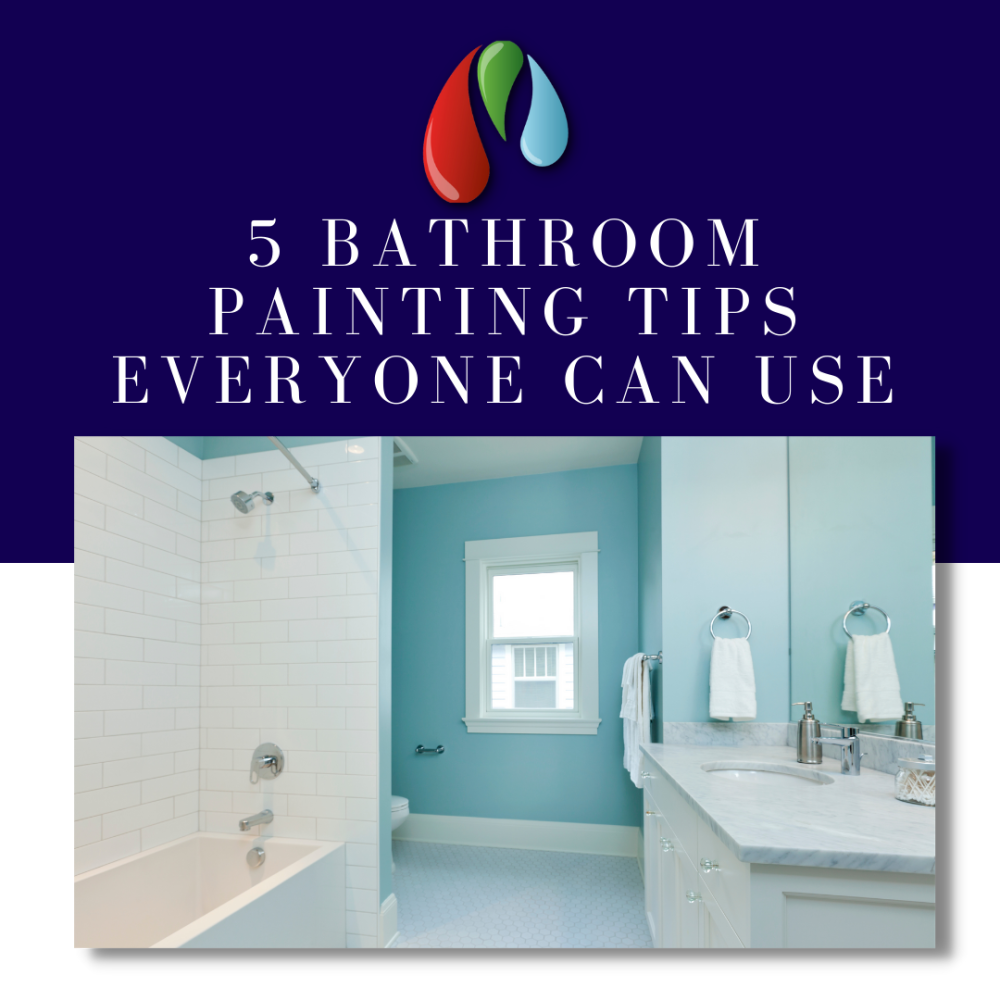5 Bathroom Painting Tips Everyone Can Use
Jordan Paul , null
June 21st, 2022

Bathrooms can be a challenge to paint because there are so many objects to paint around. Bathrooms tend to have immobile appliances and cramped spaces which tend to frustrate do-it-yourself painters, while remaining one of the most humid rooms in a home. However, that does not mean you can’t change your bathroom for the better. Here are five bathroom painting tips from professional painters.
Make Sure the Surfaces Are Dry
In a room with high humidity and dampness, how do you get the paint to stick? The first thing is to ensure the surfaces are as dry as you can make them. Paint can’t stick to wet surfaces, so you’ll need to wipe down everything first. Remove as much moisture as possible, and if the weather is nice, open a window (if the bathroom has one) and circulate some outside air into the room.
If the bathroom has no window, utilize the vent fan. Most vent fans will replace the air in a bathroom in less than fifteen minutes, and some will do it even faster. If the vent fan also has a heater, turn it on as well to help with evaporation.
Clean Up and Avoid Making a Mess
It is also important that the space is as clean as possible, especially if you are using latex paints. Ironically, bathrooms tend to be one of the dirtiest places in a home, so a good wipe down with soap and water goes a long way. Be sure and wipe everything down lastly with just water to remove any soap residue.
For the floor, most pros just install a drop cloth just above the baseboards, all around the bathroom. Covering the baseboards as well as the floor prevents drips from contacting them, since they are usually a different color than the walls. Wet paint can be a real pain to remove from surfaces like unsealed grout, so when painting bathrooms, an ounce of prevention is worth a pound of cure.
Remove the Toilet Tank and Other Obstacles
Painting some spaces in a bathroom can be challenging, like behind a toilet bowl, or around a light fixture. If you are handy with a few tools, try removing the toilet tank instead of trying to paint around it. The process is not difficult and doing so will result in a much more professional looking job. When painting around obstructions like the vanity and tub, use a paint guard or painter’s tape to make your brushstrokes as straight as possible. Straight lines tend to blend into the landscape, allowing visitors to focus on a beautiful tile job or expensive light fixture you invested in.
Specialized Paints Are In
Special paint has been marketed in recent years to alleviate some of the common issues when painting a bathroom. For example, some modern paints have additives like mildewcides that prevent the growth of spores, while others include a polymer that makes the walls easier to clean. These paints may cost a bit more, but you also get to congratulate yourself everytime you don’t waste time cleaning.
Paint Finishes Make a Big Difference
Paint finishes make a big difference in durability and cleanability. Paint comes in flat, eggshell, matte, semi-gloss, and high gloss sheens, which all deal with moisture differently. Generally speaking, the shinier the finish, the easier the surface is to clean and keep dry. That’s why the trim and doors of most homes have semi-gloss or high gloss paint, while the walls have a flat or eggshell sheen.
Most pro painters recommend either a specialty paint made just for humid areas, or using a glossy paint in the bathroom. Often marketed as bathroom paint, these paints often have elastomeric properties that prevent moisture from penetrating the surface. These paints form a water-resistant barrier that will not absorb moisture. This makes preventing mold and mildew much easier, while increasing the durability of the paint as well.
